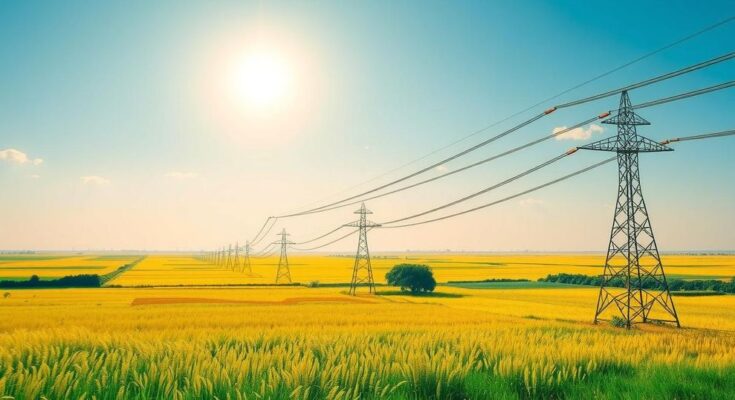The IMD forecasts extreme heat from April to June, predicting elevated temperatures and increased heatwave days across India, particularly in the northwest. This situation is expected to escalate peak electricity demand by 9-10%, stressing the power grid and affecting water resources. Policymakers are taking measures to prevent blackouts and manage rising energy needs during this hot season.
The India Meteorological Department (IMD) has issued a warning regarding extreme heat anticipated from April to June, predicting above-normal maximum temperatures across most regions, barring a few areas in western and eastern India. Central, eastern, and northwestern plains are expected to see an increase in heatwave days, potentially impacting water availability and putting pressure on the power grid due to heightened air conditioning usage.
IMD Director General Mrutyunjay Mohapatra indicated that regions in north and east India, as well as central India and northwest plains, could experience two to four additional heatwave days than usual during this period. Most areas will likely witness elevated maximum temperatures in April, with minimum temperatures also trending above normal across the majority of regions.
Northwest India is projected to face a significant increase in heatwave occurrences, possibly experiencing double the usual number of heatwave days, from an average of five to six days annually. States like Rajasthan, Gujarat, and Uttar Pradesh are among those likely to experience these above-normal conditions, with some southern and northwestern areas expected to remain at average temperatures.
Experts are warning of a 9-10% increase in peak electricity demand this summer due to the forecasted rise in heatwave days. Previous records indicate that India’s peak electricity demand surpassed 250 gigawatts in May 2023, driven by climate change-related heat stress. This unusual warmth has raised concerns about the impact on wheat crops, with predictions of decreased yields potentially leading to changes in wheat import duties.
To manage the anticipated peak electricity demand, which may reach 270 gigawatts this year, policymakers have directed power plant operators to avoid maintenance shutdowns during the peak season. While coal reserves at power stations have improved compared to the previous year, efforts are underway to ensure adequate distribution and prevent blackouts, particularly critical in mitigating heat-related health issues. Additionally, increased travel to cooler regions and the potential rise in diesel equipment usage, especially during outages, could further strain resources during this hot season.
In summary, the IMD’s warning about extreme heat from April to June highlights significant challenges for India regarding temperature spikes and increased demand for resources. Rising temperatures are predicted to result in numerous heatwave days, particularly affecting northwest India. This situation poses risks to water availability and electricity demand, which could exceed previous records due to climate change factors. Preparations and strategic planning by authorities are crucial to address these rising challenges effectively.
Original Source: www.hindustantimes.com




